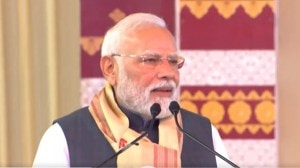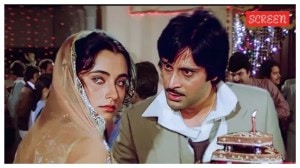Cities choking,only 8 treating 50% sewage: CPCB
Thirty five cities in India are pumping as much as 7,604 million litres of sewage daily straight into rivers,notably the Ganga,and the sea.
Thirty five cities in India are pumping as much as 7,604 million litres of sewage daily straight into rivers,notably the Ganga,and the sea.
A new report by the Central Pollution Control Board (CPCB) on water consumption and sewage disposal patterns shows that the biggest cities in India are only treating 50 per cent of the sewage they generate. Not only is the rest going back to rivers,the source of drinking water,but it is also polluting the sea. The study suggests that if an economic value were to be assigned to the fertilising potential of this wastewater,Rs 1,091 million is being lost annually.
The total waste of 35 cities is 15,644 million litres per day (MLD). Delhi tops the list the Capital generates 3,800 MLD,258 litres of sewage per capita. Mumbai is the second big pollutant with 2,671 MLD and Kolkata third with 705 MLD. Kolkata,Mumbai and Chennai account for 60 per cent of sewage spewed into the sea.
The study shows that only eight cities Hyderabad,Ahmedabad,Delhi,Mumbai,Pune,Ludhiana,Chennai and Vadodara treat more than half their sewage.
While the current state of sewage disposal poses a massive health problem,it is also a waste of resources. Sewage water has nutrients like nitrogen and phosphorus. The nutrient value of this water is between Rs 75 per hectare per annum to Rs 400 per hectare per annum. The only way out is to set up systems wherein this water is used for irrigation and fertilisation in fields and horticultural areas, said a senior scientist from CPCB.
Despite funds from the Ministry of Environment and Forests and under the Jawaharlal Nehru National Urban Renewal Mission,sewage treatment plants are not functioning to their full capacity.
While the Ministry has relaunched a plan to clean the Ganga,including a billion-dollar loan from the World Bank,the study shows that this may well have to start from the scratch.
While cities like Kolkata,Patna,Kanpur,Dehradun and Allahabad are throwing huge amounts of waste directly into the Ganga,small cities with population below 1 lakh are also to blame for the mess. Class 1 cities are dumping 1,463 million litres of sewage into the river daily. Kolkata alone throws 446 MLD into the Ganga. Class 2 cities have less waste but most are not treating any waste at all,creating dangerous pollution levels of 122 MLD generated,102 MLD is sent into the river.
This situation is very alarming. The only way to clean the Ganga now is to completely stop putting re-treated or partially treated sewage water into the Ganga. No waste water should go into the Ganga. Now that we are devising ways of cleaning the river,this is the way to be adopted said S P Gautam,CPCB chairman.
The minimum ecological flow required to keep the river alive as an ecosystem can be ensured even when the waste water is not put in the river. Hydro-geological interceptions need to be made for the Ganga to ensure ecological flow. This would include improving the gradient of storm water channels and impounding flood water. We also need monitoring and evaluation of existing sewage treatment plants, he said.
Photos



- 01
- 02
- 03
- 04
- 05



























